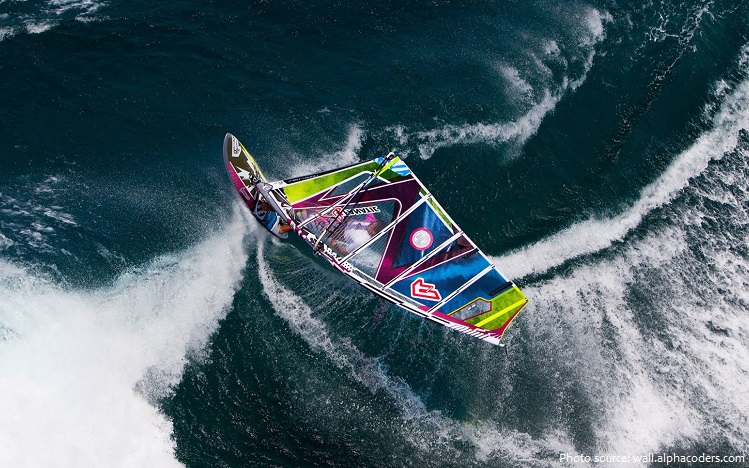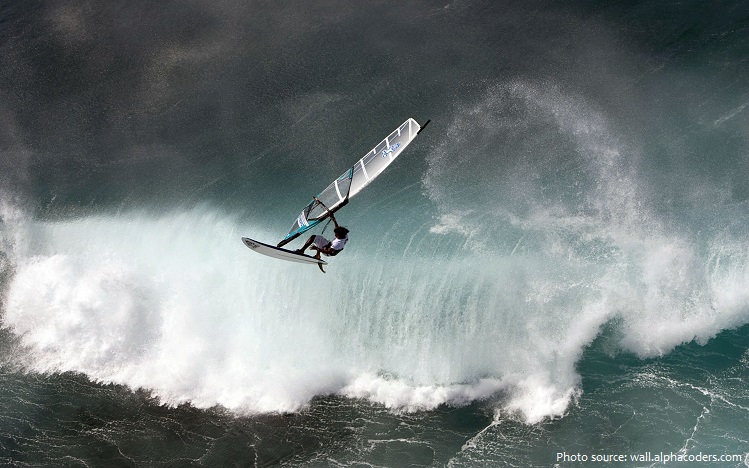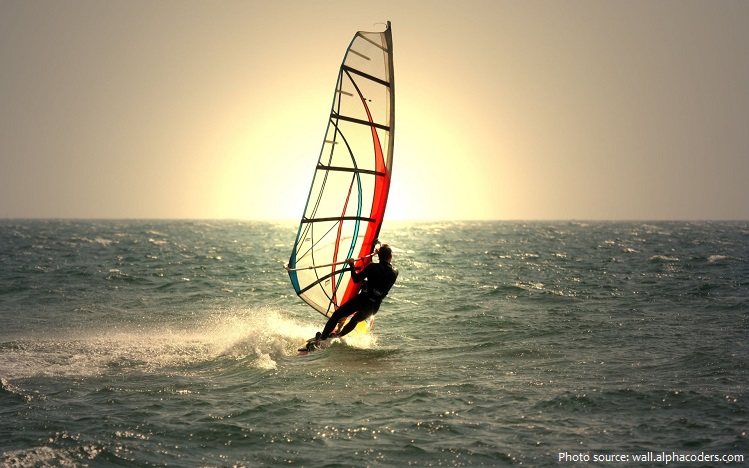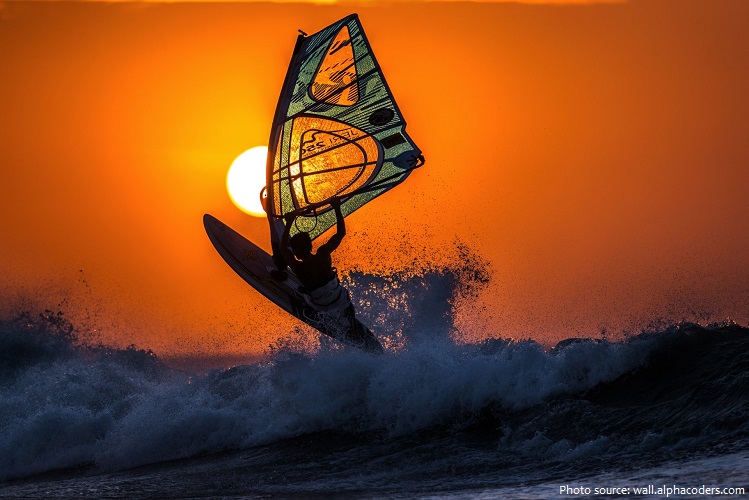
Windsurfing is a water sport that combines characteristics of both sailing and surfing. The windsurfer uses the wind to propel a board forward under his feet and skim across the water.
Windsurfing is one of the most popular sea sports, combining sea and wind as tools at the beautiful beaches around the world.
Windsurf equipment consists of a board and a rig (which is divided into a sail, a mast and a boom) and this forms the basis for windsurfing. Not forgetting the wind or course which acts like a kind of engine, but
without the noise, making this sport both peaceful and magical! It does however require energy and training to get the best results and to maximize the fun.

Even though professional windsurfers do not depend on the weather conditions so much, suitable wind is a requirement of the sport. If you are new to this sport you should prefer the summer and places with good wind. Wind speed and the direction are the things you should check. These indicators vary depending on the place and every place has their windsurfing seasons. You can check the wind speed and directions of the place that you want to visit and search for the best values for your level.
Canary Islands, Egypt, France, Florida, North Carolina, California, Netherlands, Greece, Hawaii, Australia, New Zealand, New Caledonia offer some of the best windsurfing spots on the planet.
Windsurfing dates back to the 1960s, more precisely in 1964 when Newman Darby, an American who was already a dinghy sailor, installed a sail on a very large rectangular board about three metres long and almost a metre wide.

Schweitzer began mass-producing polyethylene sailboards (Windsurfer design) in the early 1970s. The sport became very popular in Europe. The first world championship of windsurfing was held in 1973 and, by the late 70s, windsurfing fever had Europe firmly in its grasp with one in every three households having a sailboard.
During the 1980s a global community consisting of equipment designers, manufacturers, athletes, travel professionals and journalists worked together to propel windsurfing forward. Innovation allowed for the development of stiff, light weight planing short boards, foot straps, harnesses and more stable sails. Windsurfing shattered the world speed sailing record. Windsurfing’s retail momentum eventually slowed with the arrival of newer action sports.
By the 1990s closely related action sports such as mountain biking, snowboarding, stand up paddle boarding (SUP) and kite boarding all directly competed for popularity with windsurfing. Many windsurfing schools closed, or switched to teaching kite boarding and currently teach mostly wing foiling.

After some lean years in the 2000s, the sport has seen a steady revival through the explosion of foiling.
Olympic windsurfing features sailors racing over a traditional triangle course and was first contested in 1984, as a demonstration sport, with separate competitions for men and women introduced in 1992. There were slight equipment changes in successive Olympiads: sailboards of the Windglider design were used at the 1984 Games, Division II boards in 1988, Lechner boards in 1992, and Mistral boards from 1996.
Windsurfing lends itself to a wide variety of water types and conditions. The sport is practiced with equal enthusiasm on the Great Lakes and on estuaries and harbours along the coasts of Europe and North America, as well as on many larger rivers. In the early days of windsurfing, sailboards were capable of only modest speeds and were used close to shore. However, the sport has evolved to the point that experienced sailors using specialized sailboards have reached speeds of more than 40 knots and have sailed across the Atlantic Ocean.

Windsurfing across Atlantic – Sergio Ferrero (Italy) crossed the Atlantic from the Canary Islands to Barbados. The journey took 24 days to complete from 6–30 June 1982.
The longest windsurf race is the Lancelin Ocean Classic Windsurfing Marathon held annually in Lancelin, Australia. The course measured 25.62 km (15.92 miles) on 12 January 2008.
The greatest distance on a windsurfer (flat water) in 24 hours is 695.7 km (432.28mi) and was achieved by Dennis Klaaijsen (Netherlands) in Zeeland, Netherlands, on 10-11 August 2014.
The longest windsurfing journey is 14,454 km (8,981 mi), achieved by Jono Dunnett (UK), from 20 May 2017 to 11 May 2019.

The fastest men’s windsurfing speed (nautical mile) is 43.04 knots (49.53 mph; 79.71 km/h), achieved by Antoine Albeau (France) in La Palme, France, on 17 July 2020.
The largest wave windsurfed is 10.97 m (36 ft) and was achieved by Sarah Hauser (France), in Haiku, Hawaii, USA, on 31 December 2019.
Longest duration windsurfing a wave is 7 min 3 sec and was achieved by Camille Juban (France) at Chicama, Ascope, Peru, on 19 August 2013.
The most windsurfing world championship titles won is 42, achieved by Björn Dunkerbeck (Switzerland) between 1988 and 2016.